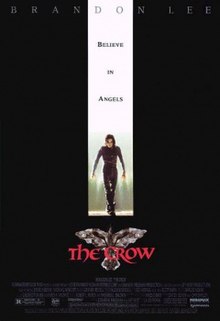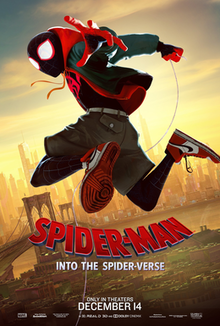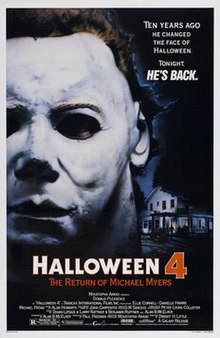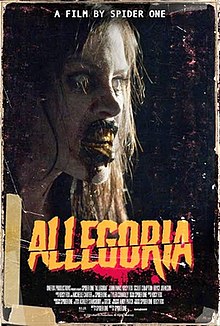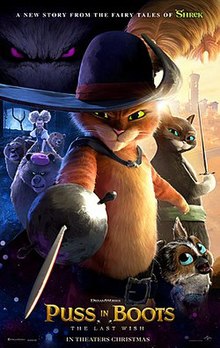
Puss in Boots: The Last Wish
If I am upright and honest about it, I had mostly moved on from Puss in Boots and the Shrek franchise altogether far before the original 2011 film arrived. Although 2001Ďs Shrek was a breath of fresh air that helped DreamWorks Animation become one of the leading studios in animated cinema and 2004Ďs Shrek 2 only improved on that, by 2007Ďs Shrek the Third, I couldnít help but feel like most of the air had been let out from the balloon. The series still had moments to entertain, but it felt like the foundation had settled. The same way I looked forward to and watched Fantastic Beasts because of how much I loved Harry Potter, I knew with Fantastic Beasts what I knew with the Shrek franchise Ė it had peaked, all I could expect now was safe and satiable celebrations of what had come before it (look at Pirates of the Caribbean for another example of seriesí that kind of rest on their laurels).
As a spin-off prequel film, the 2011 film Puss in Boots was alright. I believe that is about the extent of what Iíd say about it Ė maybe, even, very alright. I enjoy the Puss in Boots character enough and I like how it is basically a tongue-in-cheek extension to Antonio Banderasí portrayal of Zorro. The animation is fun and the world itself has always been a sandbox for creative, goofy moments Ė I liked it, but I canít say it left much of an impression on me looking back a decade after the fact.
This film though, man, Puss in Boots: The Last Wish, completely changed what I thought about the Shrek franchiseís future and, more so, Puss in Bootsí future as a character.
As you might surmise, Puss in Boots 2 is set after the events of the original film and after the events of the Shrek series (so, it isnít a prequel series anymore, weíre all caught up), and follows Pussí in the afterglow of an illustrious career and his many lifetimeís spent adventuring and exploring the world. This is not his choice, but because he has used up all but one of his nine lives and knows his next life lost will be his last. In spite his disdain for the mundane, Puss decides to hang up his cape and resign himself to a simpler life. That is, until he finds out about a magical Wishing Star that can undo it all and bring his lives back. The film sees Puss align himself with his former love interest Kitty Softpaws and new friend, a kind, but naÔve therapy dog, as they try to reach the Wishing Star.
Of course, the film would not be complete without a villain or two who also wish to lay claim to the Starís powers. For this, we have reimagined versions of ďBigĒ Jack Horner and the Three Bears Crime Family (led by Goldilocks) with unique motives for why they want the wish.
Another antagonist in this film, and certainly, the most formidable, is the Wolf, a wolf in a black hooded cloak that serves as the embodiment of Death himself.
In the film, Puss in Boots is tasked, not only with the physical task of attaining The Wishing Star, but in a plight against himself, including his fears of death and of not being remembered.
What can I say about this film?
Like many of you, I had seen the reviews that had referred to Puss in Boots as DreamWorksí answer to Logan, a peculiar comparison that I understood on a surface level, but didnít know the specifics on yet. I understood the idea of why it would be the answer to Logan. Logan was a film about a superhero who was on his last legs and now, with adventure in his rearview, yearned for the deep personal connections that had always eluded him. Thatís something we have seen long before Logan, but is also something that is very difficult to earn.
Nowadays, it is more popular than ever, which you better believe is why the same director who did Logan is helming the newest Indiana Jones film.
This film earns that. It endears you to a character youíve always loved, but also elevates him and, thus, the film itself. The film is filled to the brim with the same type of humor weíve come to expect from the Shrek series, but injects it with a newfound dramatic depth that hasnít been captured in a DreamWorks film, perhaps ever (barring, maybe, the height of the How to Train Your Dragon series).
The way the film is shot, with a stylized storybook animation (shades of Spider-Man: Into the Spider-Verse or DreamWorksí more recent and solid caper film The Bad Guys), how it incorporates fear and intimidation, and the emotions Puss feels, is top-shelf.
I like DreamWorks, I think (I love How to Train Your Dragon).
When I watch The Croods, Trolls, and The Boss Baby, I canít say I am incredibly impressed Ė but I am alright with them. Iím charmed by them in the same way I am charmed by any other average cartoon.
This though, this made me feel like how I did in the early 2000s when Pixar felt indestructible. Do this more.
The main cast of characters are endearing and easy to get behind. The film manages to overcome certain clichťs in spite itself, like, for instance, the naÔve dog character whose comic-relief existence feels like it has already existed in a million other films. You know the type, the laughy, goofy Dory or Donkey, or that one kid from Up Ė Iíll be honest, nowadays, I am tired of this character trope and itís a turnoff. That in mind, I found myself so behind the characters in this film that I found myself rooting for them anyways.
The main-antagonist, which Iím saying is Death himself, is a very memorable and surprisingly intimidating presence throughout the film Ė I actually had goosebumps when I saw him and I believe history will smile down on him for years to come.
As a fan of animation, I loved Puss in Boots: The Last Wish. Although I feel like I am still coming down from the Ďhighí I felt from seeing the film and so, I canít necessarily exclaim whether it is the best DreamWorks film ever made yet (for me, its only competition is the Dragonsí trilogy), it easily makes the shortlist. The film is smart, fun, and ambitious, with a small sprinkling of macabre, and thatís just about best case scenario for me.








